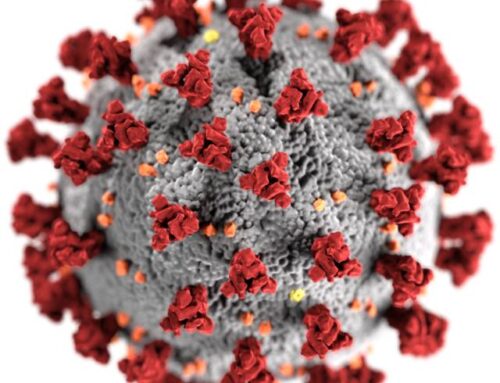During the unprecedented year of 2020, staff at Quinte Health Care’s four hospitals bore the brunt of the COVID-19 threat and will continue to battle through the pandemic in 2021.
Chief of Staff Dr. Colin McPherson, reflecting on the challenges presented by the virus for QHC, notes the dramatic redesigning of most of its services and processes to optimize infection control and minimize exposure risk.
He added these changes allowed for extra monitoring of the virus and additional co-ordination of care and services with regional healthcare and municipal partners in a way they haven’t seen before.
“Initially, it meant slowing down services while we took stock of our PPE and make sure we have the right supply,” McPherson explained.
“Then, it was applying a judicious process of reopening services, in a way that allowed for patient flow to minimize people being too close together and to make sure that the proper masks were worn.”
The implementation and optimization of virtual care through accessible mediums such as ZOOM was another big game-changer for the organization, McPherson stated, something that wasn’t possible to do prior to the pandemic.
The doctor added this has transformed so many services within health care in the past year.
“Doctors of every type are now using tele-video and telephone to connect with patients,” he said. “It’s really been an extraordinary change.”
McPherson said much of the focus has been on areas of medicine that don’t require in-person interaction, such as physical examinations, and patients have responded to it positively.
“They tend to get speedier service, they don’t have to drive in from a distance to get the follow-up they need,” he said. “”We find that physicians and other care providers are also learning where it works well and where it doesn’t and we’re adapting accordingly. It’s been very exciting.”
Despite all the stresses and pressure on the healthcare system throughout both waves of the pandemic, McPherson noted that patient flow from QHC’s four hospitals to long-term care has been reduced thanks to infection control measures that have been put in place.
“In our hospitals, we haven’t had as many actual COVID patients compared to some other areas of the province,” he said. “(Belleville General Hospital) is dealing with capacity pressures that we haven’t had before, even though we haven’t been in a red zone just yet. This concerns us for sure.”
When the first lockdown hit in the spring, concerns were raised from the public surrounding the cancellation of elective surgeries and treatments due to restrictions associated with the virus.
With the second provincial shutdown in effect, McPherson said he is optimistic that QHC will maintain these procedures much longer than they did in March when the novel coronavirus descended upon the country and the Quinte region.
“We’ve worked out our PPE resources and our infection control processes to be able to bring people in safely and manage them safely with much more confidence than we did back then,” he said.
On top of all that, he said the importance of camaraderie and collegiality has risen exponentially this year as staff members guide each other through a stressful time.
There was also a changing of the guard at the administrative level of QHC, with President and CEO Mary Clare Egberts retiring after a decade at the helm, paving the way for Stacey Daub to take over on Jan. 4.
McPherson described Egberts as a “remarkable leader” who made a positive impact on the organization and community healthcare in the region and said she has retired “deservedly.”
“She gave the organization a great deal of confidence and was very present day after day with all of the staff,” he said. “She and I did frequent virtual town halls to make sure our communication with staff was optimal.
This leaves the staff in good shape for Daub, who comes to the area from North York with outstanding credentials in her own right. Macpherson said her experience in the field will give QHC a jump on its peers in the Eastern Ontario health system, especially once communication is delivered.
“I think she’ll bring a great deal of excitement and renewed enthusiasm within the hospital and hopefully outside of it as well, so we can get through this pandemic and be stronger because of it,” McPherson noted.
“She’ll be able to really assess how we do things similarly and differently from her other organization. I think that will give us an immediate advantage.”
As for the overall response to the pandemic heading into 2021, McPherson stated QHC plans to “stay the course” and continue health and safety measures, including cleaning and disinfection protocols, and enforcing restrictions associated with a second lockdown.
“Hopefully we’ll have the space and the prevalence will remain low enough that we’ll be able to maintain our full spectrum of services. If occupancy (in the hospitals) starts to go up, then we’ll have to make some decisions on how to adjust our services and how to rationally use our staff to deliver care to the greatest need.”
McPherson’s final message to local residents and patients as they get set to flip their calendars is that there have been remarkable achievements made by the community by simply doing the right thing — which will serve well if everyone bands together during the second lockdown.
“When we came together and restricted our social gatherings, we made a huge difference to other people’s lives, the healthcare system and those of us who are trying to manage this disease on the frontlines,” he said. “The collective effort has been extraordinary.
“We still have a little bit left to go. I hope everybody will continue to take the virus seriously, knowing that there’s some light at the end of the tunnel with the vaccines being distributed. That brings some great promise for 2021.”








Leave A Comment
You must be logged in to post a comment.